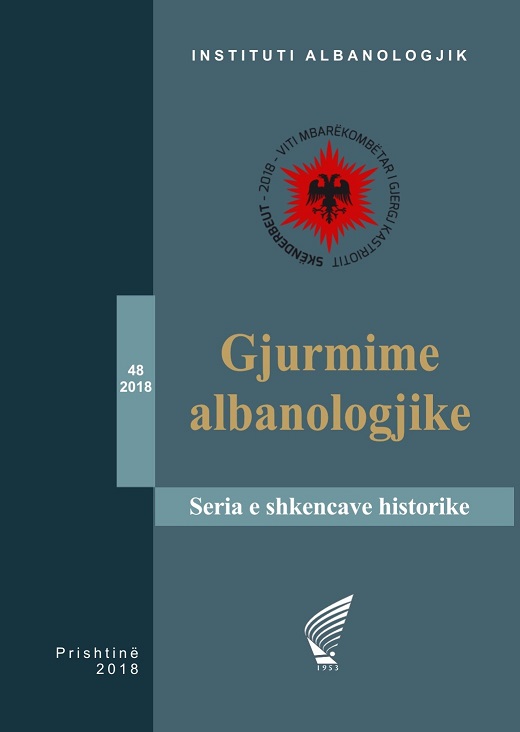PUSHTIMI I MBRETËRISË DARDANE DHE REZISTENCA E DARDANËVE KUNDËR ROMAKËVE DHE ROMANIZIMIT
THE CONQUEST OF DARDANIAN KINGDOM AND DARDANIANS RESISTANCE AGAINST ROMAN CONQUEST AND ROMANIZATION
Author(s): Naser FerriSubject(s): Cultural history, Ethnohistory, Military history, Social history, Ancient World
Published by: Instituti Albanologjik i Prishtinës
Keywords: Dardanian Kingdom; Dardanians; resistance; Roman Empire; Romanization; 4th century BC; army; Antiquity;
Summary/Abstract: Although Roman sources started to mention Dardanians only in the 4th century BC, they already had organized society several centuries earlier, led by principes or by kings. They also had urban settlements, large army and other institutions and in large Dardanian centers silver money was minted. First contacts between Dardanians and Romans were in the form of army alliances against mutual enemy Macedonia. From 168 BC these alliances turned to open hostility which resulted in many years of war, culminating after the military campaign of Consul Crassus in 29-28 BC when Dardania was formally conquered. After the Roman conquest urban settlements built in Roman fashion are mentioned in Dardania such as Colonia Scupi, Municipium Ulpianum, Municipium Dardanorum, Muncipium Naissus and larger number of lower rank settlements (Timacum maius, Timacum minus, Ad Herculem, Aquae Bass(ianae?), Vendenis, Theranda, Vicianum). Nevertheless, armed resistance of Dardanians against Romans continued in various degrees of intensity and form in latter times until the end of Antiquity. In addition to armed resistance, there were various forms of peaceful, passive resistance thanks to which many ethno-cultural factors of Dardanian culture have been preserved and saved from destruction and assimilation such as onomastics, place names, religious beliefs and cults of autochthonous Dardanian deities, clothing, jewelry, customs etc. Related to this, written testimonies of ancient authors exist as well as data from epigraphic monuments found in the territory that covered the ancient Dardanian Kingdom.
Journal: Gjurmime Albanologjike - Seria e shkencave historike
- Issue Year: 2018
- Issue No: 48
- Page Range: 9-27
- Page Count: 19
- Language: Albanian
- Content File-PDF

